Do Essential Oils Make You High
Curious about essential oils and their potential effects on your mind and body?
In this comprehensive article, we will explore the world of essential oils, discussing how they are used, whether they have psychoactive effects, and the risks and benefits associated with their use.
We will also delve into the different types of essential oils available, how to use them safely, and alternative options for aromatherapy.
Grab a cup of tea, sit back, and let’s dive into the fascinating world of essential oils together!
Key Takeaways:
What Are Essential Oils?
Essential oils are natural plant extracts obtained from various parts of plants like flowers, leaves, stems, and roots. They are highly concentrated with the aroma and chemical properties of the source plant.
When extracting essential oils, different methods are used based on the plant part from which the oil is derived. Steam distillation is a common technique where steam is passed through the plant material, carrying the volatile compounds that form the essential oil. Cold pressing is another method typically used for citrus fruits, where the oil is extracted from the peel. Solvent extraction involves using solvents like hexane to isolate the oils, especially for delicate flowers.
The diversity of plants that yield essential oils is remarkable. Lavender, with its calming scent, is extracted from the flowers of the lavender plant. Eucalyptus oil, known for its respiratory benefits, comes from the leaves of the eucalyptus tree. The zesty aroma of lemon oil is sourced from the peel of lemons, while the warm, spicy fragrance of cinnamon oil is extracted from the bark of the cinnamon tree.
Chemically, essential oils are composed of volatile compounds such as terpenes, alcohols, esters, and phenols. These compounds contribute to the characteristic aroma and therapeutic properties of each oil. For instance, the terpene limonene found in citrus oils gives them their uplifting scent, while the alcohol linalool in lavender oil is responsible for its relaxing qualities.
How Are Essential Oils Used?
Essential oils can be used in various ways, including aromatherapy, topical application, and even ingesting in some cases. Copaiba oil, derived from Copaifera Multijuga resin, is known for its therapeutic benefits and is often applied topically for pain relief and inflammation.
When using Copaiba oil topically, it’s important to dilute it with a carrier oil like coconut or almond oil to prevent skin irritation. The oil can be gently massaged into the skin to alleviate muscle aches, joint pain, and even headaches.
- Copaiba oil’s anti-inflammatory properties make it a popular choice for reducing swelling and redness in skin conditions like acne or eczema.
- Many people also find relief from respiratory issues by diffusing Copaiba oil, helping to clear congestion and support easier breathing.
- Copaiba oil’s calming scent helps to promote relaxation and alleviate stress and anxiety when used in aromatherapy practices.
Do Essential Oils Have Psychoactive Effects?
While essential oils do not typically have psychoactive effects like cannabis, some oils may interact with the CB2 receptors in the body, affecting the nervous system. Copaiba resin oil, for example, has been studied for its potential brain effects.
In recent research, Copaiba resin oil has shown promising results in modulating neurotransmitters in the brain, which could potentially impact mood and cognitive function. Studies suggest that Copaiba oil may have neuroprotective properties due to its ability to reduce inflammation and oxidative stress in the brain.
Copaiba oil’s interaction with the endocannabinoid system is noteworthy. It has been found to influence the CB2 receptors in a way that promotes a calming effect on the nervous system, similar to how cannabinoids from cannabis act. This mechanism hints at the therapeutic potential of Copaiba resin oil in managing stress and anxiety.
What Is the Difference Between Psychoactive and Non-Psychoactive Effects?
The difference between psychoactive and non-psychoactive effects lies in their impact on brain function and behavior. Research conducted in laboratories and studies with Copaiba resin oil have shown varying effects, distinguishing between the two categories.
Psychoactive effects refer to substances that alter brain function, leading to changes in perception, mood, and consciousness. In contrast, non-psychoactive effects do not affect cognitive functions or produce a ‘high.’ Copaiba resin oil, with its rich composition of terpenes and cannabinoids, has been investigated for its potential therapeutic benefits without the psychoactive impact commonly associated with cannabis-derived products.
- Laboratory research indicates that Copaiba resin oil interacts with the body’s endocannabinoid system, influencing pain perception and inflammation without causing psychoactive effects.
- On the other hand, psychoactive substances like THC found in cannabis bind to cannabinoid receptors in the brain, leading to altered sensory experiences and cognition.
Can Essential Oils Make You High?
Essential oils, including Copaiba resin oil, do not contain THC, the psychoactive compound found in cannabis that creates a ‘high.’ While some oils like CBD may have therapeutic benefits, they do not induce a psychoactive high.
It’s essential to understand that the properties of essential oils stem from their aromatic compounds extracted from plants, offering therapeutic benefits without the mind-altering effects associated with THC. For instance, Copaiba resin oil has gained popularity for its anti-inflammatory and pain-relieving properties, making it a valuable addition to aromatherapy practices.
What Are the Risks of Using Essential Oils?
There are risks associated with using essential oils, such as skin irritation or allergic reactions, especially when applied directly. Animal testing and studies with Copaifera Multijuga resin have highlighted potential toxicity concerns, particularly affecting keratinocytes, the skin cells.
When essential oils come into contact with the skin, they can cause redness, burning sensations, or even rash-like irritations, especially in those with sensitive skin. Allergic reactions may also manifest with symptoms ranging from mild itching to severe hives or swelling.
The research involving Copaifera Multijuga resin has shown that high concentrations can lead to cellular damage and even trigger inflammation responses in the skin. This highlights the importance of safety precautions like proper dilution and patch testing before applying any essential oils directly on the skin.
What Are the Possible Side Effects of Essential Oils?
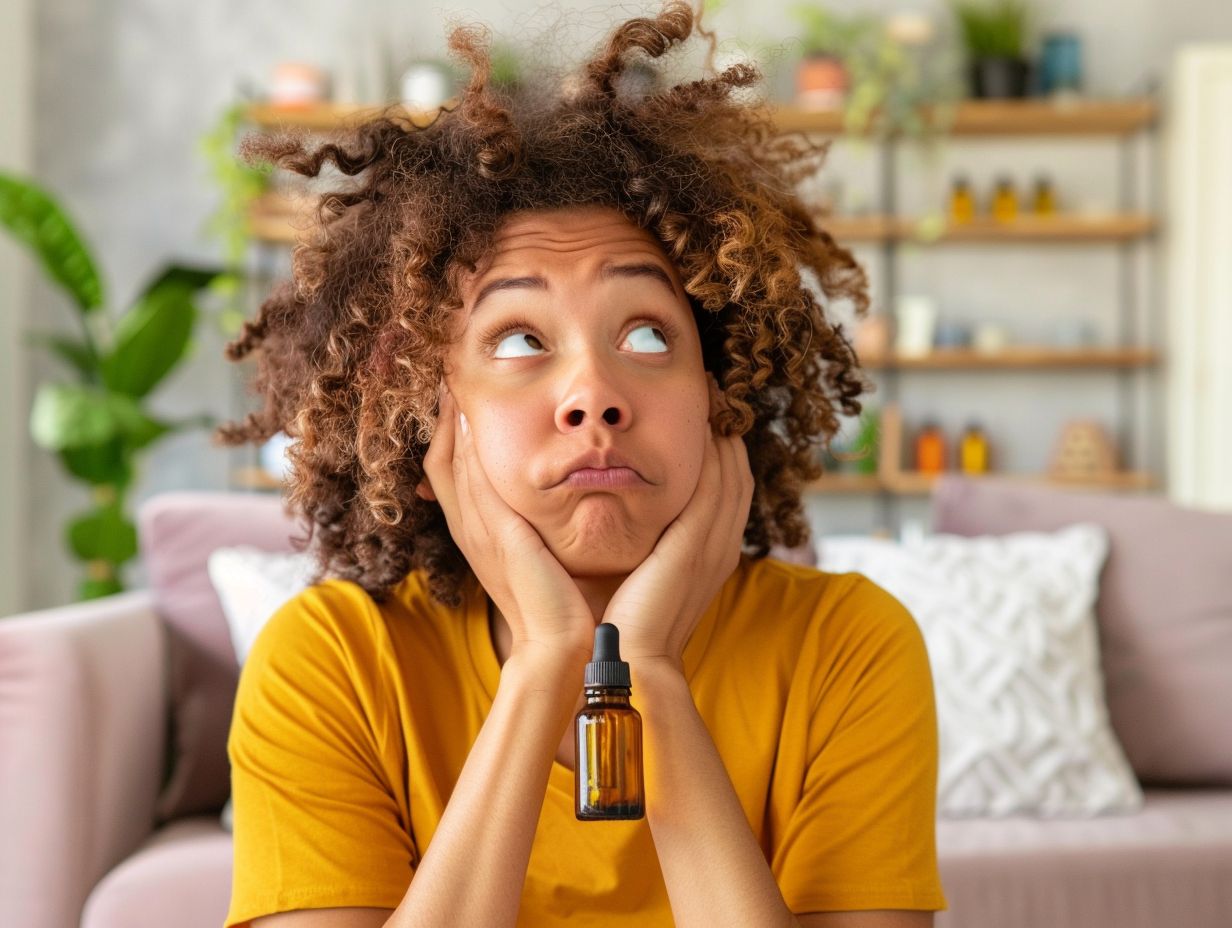
When essential oils are applied to the skin without proper dilution, they can cause adverse reactions due to their potent nature. Skin irritation is a common side effect, resulting in redness, itching, or a burning sensation.
Inflammation is another issue that may arise, leading to swelling and discomfort. Sensitization reactions can occur over time, causing the skin to become more reactive to the oil.
Copaiba oil, however, has shown potential benefits for skin health by influencing keratinocytes, which are essential for maintaining the skin barrier function and overall skin integrity.
What Are the Benefits of Using Essential Oils?
Using essential oils can offer various benefits, including therapeutic properties that help alleviate inflammation, provide pain relief, and act as mood enhancers. The aromatic compounds present in essential oils contribute to their diverse range of benefits.
When essential oils are inhaled, aroma chemicals trigger the olfactory system in the brain, influencing emotions and enhancing mood. For instance, the scent of lavender oil is known to promote relaxation and reduce anxiety levels. The anti-inflammatory properties of oils like eucalyptus and peppermint can help soothe sore muscles and joint pain when applied topically. The versatility of essential oils allows for both topical application and diffusion, catering to individual preferences for how they prefer to experience the therapeutic effects.
What Are the Different Types of Essential Oils?
There are various types of essential oils categorized based on their chemical composition, including terpenoids, monoterpenes, and sesquiterpenes. Some popular varieties include lavender, pine, and other fragrant oils known for their purity and therapeutic grade.
Terpenoids are organic compounds found in plants, contributing to their aroma and medicinal properties. Monoterpenes, on the other hand, are a subgroup of terpenoids known for their volatile nature.
Lavender oil is renowned for its calming effects, making it a popular choice in aromatherapy and skincare products. Its antiseptic properties also make it a versatile option for treating minor skin irritations.
Pine oil, with its fresh and invigorating scent, is often used in household cleaners and air fresheners. Its antimicrobial properties make it an excellent natural disinfectant.
Citrus Oils
Citrus oils are popular essential oils derived from citrus fruits, known for their refreshing aroma and antibacterial properties. They are often used in aromatherapy and possess therapeutic-grade qualities.
Citrus essential oils have a diverse chemical composition, typically rich in compounds like limonene, citral, and linalool, which contribute to their unique fragrance and healing properties. The antibacterial benefits of these oils make them effective for purifying the air, cleaning surfaces, and supporting the immune system.
Renowned for their aromatic appeal, citrus oils like orange and lemon can uplift the mood, reduce stress, and promote mental clarity. When selecting citrus oils, look for those labeled as therapeutic grade, indicating a higher level of purity and quality suited for various therapeutic applications.
Floral Oils
Floral oils encompass a range of essences derived from flowers, featuring Beta Caryophyllene and other aromatic compounds. These oils are known for their captivating fragrances and often carry Latin names reflecting their botanical origins.
Each floral essential oil offers a unique olfactory experience, with Beta Caryophyllene known for its spicy, woody aroma. The Latin nomenclature of these oils plays a crucial role in understanding their classification based on plant families and species.
For instance, Rose oil, scientifically known as ‘Rosa damascena,’ reflects its origin from the damask rose plant. Similarly, Lavender oil, or ‘Lavandula angustifolia,’ denotes its lavender plant source. This systematic naming convention assists botanists, perfumers, and consumers in identifying and appreciating the diverse floral essences available.
Herbal Oils
Herbal oils are derived from various botanical sources like tea tree oil, rich in terpinolene and other beneficial compounds. These oils offer a multitude of health benefits and are often integrated into practices like integrative medicine.
Terpinolene, a common constituent found in tea tree oil, possesses anti-inflammatory and antimicrobial properties, making it beneficial for skincare and combating infections. Herbal essential oils like lavender and peppermint are known for their calming and invigorating effects, respectively, contributing to stress relief and mental clarity.
When used in aromatherapy, these oils can help alleviate headaches, improve sleep quality, and boost mood. Many healthcare practitioners incorporate herbal oils into their treatment plans to complement conventional therapies and promote overall well-being.
Tree and Resin Oils
Tree and resin oils originate from sources like the Copaiba tree, containing a unique chemical fingerprint that offers diverse benefits. These oils are often used topically for skin health and interact with various skin cells for therapeutic effects.
When we delve into the specific qualities of Copaiba tree-derived oils, we uncover a remarkable array of properties that make them stand out in the world of essential oils. The resin from this tree not only carries a distinctive aroma but also boasts potent anti-inflammatory and antibacterial characteristics. This natural marvel has been traditionally valued for its ability to promote skin rejuvenation and combat common skin issues. In terms of chemistry, Copaiba oils are rich in beta-caryophyllene, a compound known for its analgesic and anti-inflammatory activities.
Spice Oils
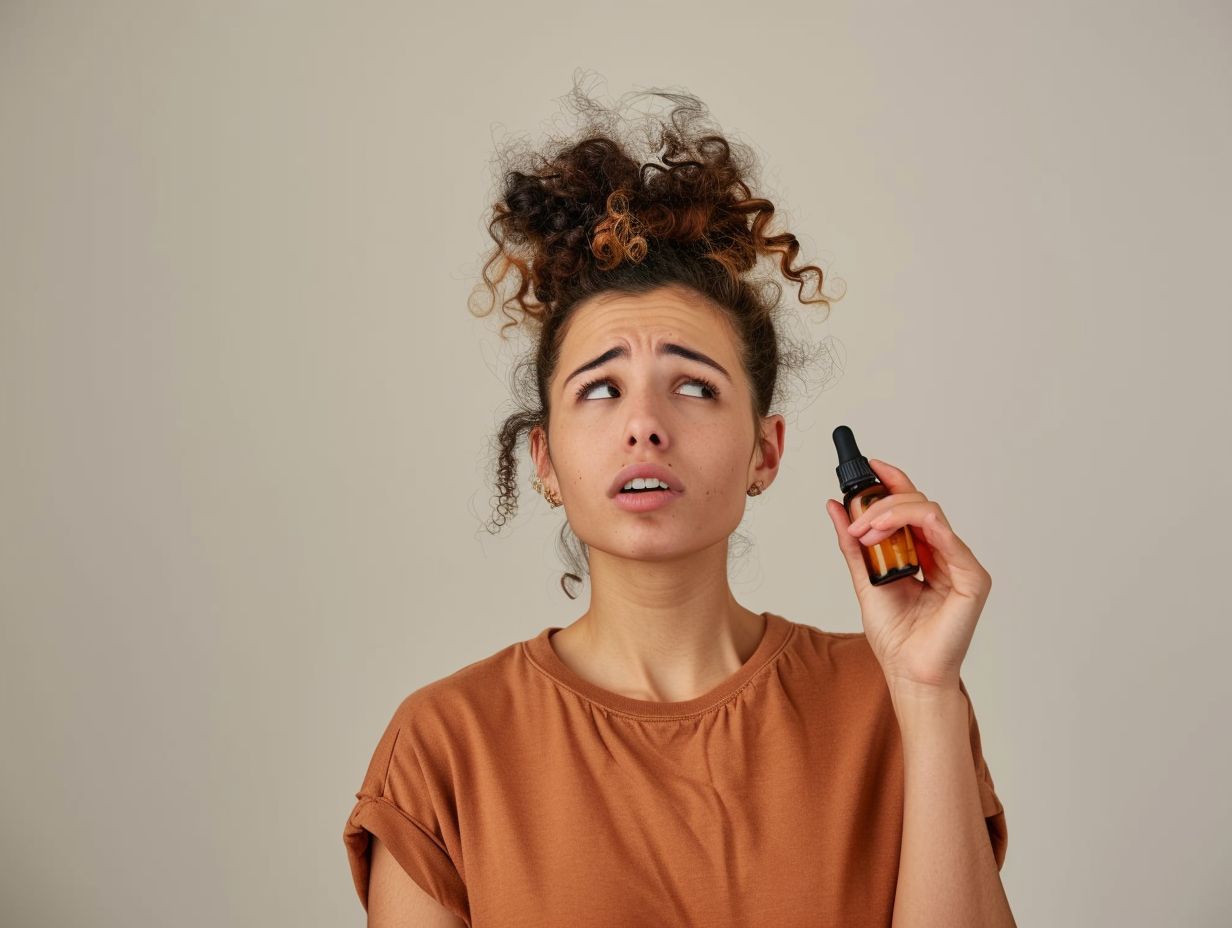
Spice oils, rich in terpenoids and sesquiterpenes, include varieties like peppermint oil known for their aromatic and medicinal properties. These oils often exhibit dark-colored hues due to their unique chemical composition.
When we look at peppermint oil, its dark color is attributed to the presence of these bioactive compounds, giving it a unique appearance compared to other essential oils. The complex interactions of various terpenoids and sesquiterpenes lend spice oils their rich and potent qualities that make them popular choices in aromatherapy and alternative medicine.
Terpenoids are organic compounds responsible for the distinctive fragrances associated with peppermint oil and other spice essential oils. These compounds contribute not only to the aroma but also to the therapeutic benefits of these oils. Sesquiterpenes, another group of compounds found in spice oils, possess anti-inflammatory and antibacterial properties, making them valuable in the realm of natural remedies.
When we look at peppermint oil, its dark color is attributed to the presence of these bioactive compounds, giving it a unique appearance compared to other essential oils. The complex interactions of various terpenoids and sesquiterpenes lend spice oils their rich and potent qualities that make them popular choices in aromatherapy and alternative medicine.
Medicinal Oils
Medicinal oils encompass a range of essences with potent health benefits, often meeting therapeutic grade standards. These oils are typically stored in glass containers to maintain their purity and are distinct from synthetic fragrance oils.
Essential oils derived from plants have been used for centuries for their therapeutic properties. From promoting relaxation and stress relief to boosting immunity and reducing inflammation, these oils offer a natural alternative for various health concerns. When selecting essential oils for medicinal purposes, it is crucial to ensure they are of therapeutic grade, ensuring their safety and efficacy.
How to Use Essential Oils Safely?
To use essential oils safely, it is essential to verify their purity and quality, especially for dark-colored oils that may indicate concentrated compounds. Integrative medicine and aromatherapy practices offer guidelines on safe and effective usage.
Regarding choosing essential oils, opt for reputable sellers who provide pure, organic options without additives or fillers. Quality assurance can be ensured by looking for oils that have been tested by third-party laboratories and have detailed information on their source and production methods.
- Consulting with a trained aromatherapist or healthcare practitioner can also be beneficial in determining the proper dilution ratios and application methods.
- It is crucial to always perform a patch test before applying any essential oil topically to check for potential allergic reactions.
What Are the Alternatives to Essential Oils for Aromatherapy?
Apart from essential oils, alternatives for aromatherapy include fragrance oils and other scented products that offer similar aromatic benefits for well-being and relaxation. Aromatherapy diffusers are commonly used to disperse these fragrances effectively.
Fragrance oils are crafted to mimic the scents found in nature while offering a wide range of unique fragrances not always available in essential oils. These oils are often more cost-effective than essential oils, making them an accessible option for those exploring aromatherapy on a budget.
For individuals sensitive to strong scents, using scented products like candles or wax melts can provide a milder yet still impactful way to enjoy aromatherapy benefits without overwhelming the senses.
Regarding aromatherapy diffusers, there are various types to choose from, such as ultrasonic diffusers, nebulizing diffusers, and heat diffusers, each with its own way of dispersing the fragrant oils into the air for inhalation.
Aromatherapy Diffusers
Aromatherapy diffusers are devices that disperse fragrances, essential oils, and other scents into the air for various health benefits. These devices promote wellness through the diffusion of beneficial essences.
Essential oils used in diffusers are extracted from plants, flowers, and herbs, each carrying unique therapeutic properties. When the diffuser releases these oils into the air, they can be inhaled or absorbed through the skin, offering a natural way to support physical, mental, and emotional well-being. Some common benefits include stress relief, improved sleep, enhanced focus, and mood enhancement. Aromatherapy diffusers can humidify the air, creating a more comfortable environment and aiding respiratory health.
Aromatherapy Candles
Aromatherapy candles emit scents like peppermint oil that offer therapeutic benefits, promoting relaxation and well-being. The use of aromatherapy candles enhances the ambiance and provides a soothing atmosphere.
This soothing effect can help individuals unwind after a long day, relieving stress and tension. The calming fragrance of peppermint oil in these candles can also aid in alleviating headaches and promoting mental clarity. The warm glow of the candlelight enhances the overall ambiance, creating a peaceful retreat within your own space. Whether used during meditation, yoga practice, or simply during quiet moments of reflection, the aromatherapy candles play a vital role in enhancing emotional well-being and improving mood.
Aromatherapy Inhalers
Aromatherapy inhalers deliver essential oil benefits through inhalation, offering health benefits and promoting well-being. Popular scents like peppermint oil are often utilized in these inhalers for their aromatic qualities.
These inhalers are convenient and easy to use, allowing individuals to experience the therapeutic effects of essential oils anywhere, anytime. Inhaling peppermint oil, for example, can help alleviate headaches, improve focus, and boost energy levels. By directly inhaling the aroma, users can bypass the digestive system and experience the benefits more quickly and efficiently.
Aromatherapy Sprays
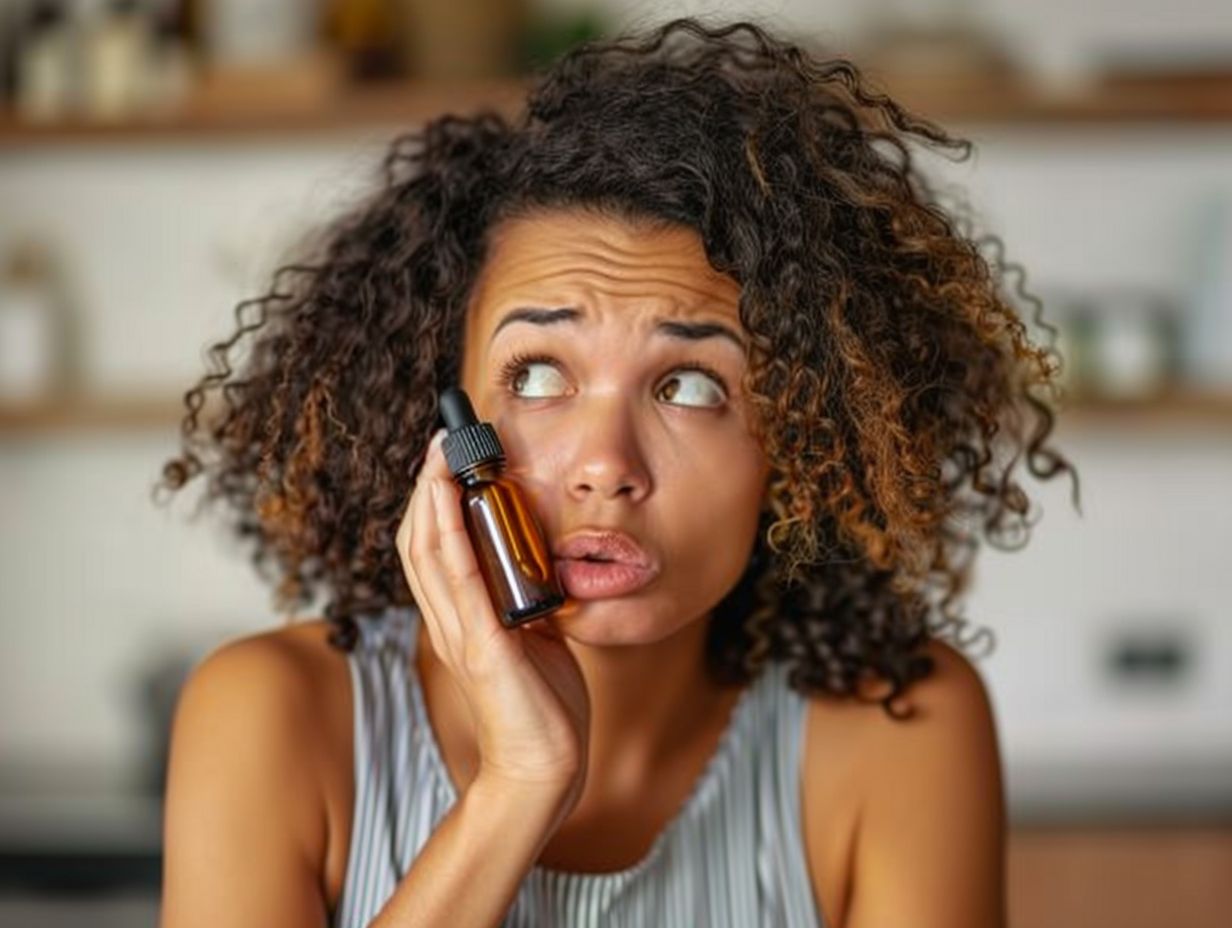
Aromatherapy sprays are convenient products that offer wellness benefits through fragrance dispersion. Scents like lavender are commonly used in these sprays to promote relaxation and enhance overall well-being.
Research has shown that aromatherapy sprays can help reduce stress levels, improve sleep quality, and even boost mood. The soothing aroma of lavender calms the mind and body, making it a popular choice for aromatherapy applications. The portability of these sprays allows you to enjoy the benefits of aromatherapy wherever you go, whether it’s at home, in the office, or during travel.
Frequently Asked Questions
Do Essential Oils Make You High?
No, essential oils do not make you high. They are extracted from plants and do not contain any psychoactive substances.
Are Essential Oils Similar to Cannabis?
No, essential oils and cannabis are two completely different substances. Essential oils are extracted from various parts of plants, while cannabis is a plant itself.
Can Inhaling Essential Oils Cause a High?
No, inhaling essential oils does not cause a high. The molecules in essential oils are too large to enter the bloodstream and produce any psychoactive effects.
Do Essential Oils Contain THC?
No, essential oils do not contain THC, the main psychoactive compound found in cannabis. Essential oils are made up of various chemical compounds and do not contain any cannabinoids.
Are There Any Risks or Side Effects of Using Essential Oils?
Generally, essential oils are safe when used properly. However, some people may experience allergic reactions or skin irritation. It’s important to dilute essential oils properly and do a patch test before using them.
Can Essential Oils Be Used for Recreation or as a Substitute for Drugs?
No, essential oils should not be used for recreation or as a substitute for drugs. They are meant for therapeutic or aromatherapy purposes and should not be ingested or used as a substitute for medication.

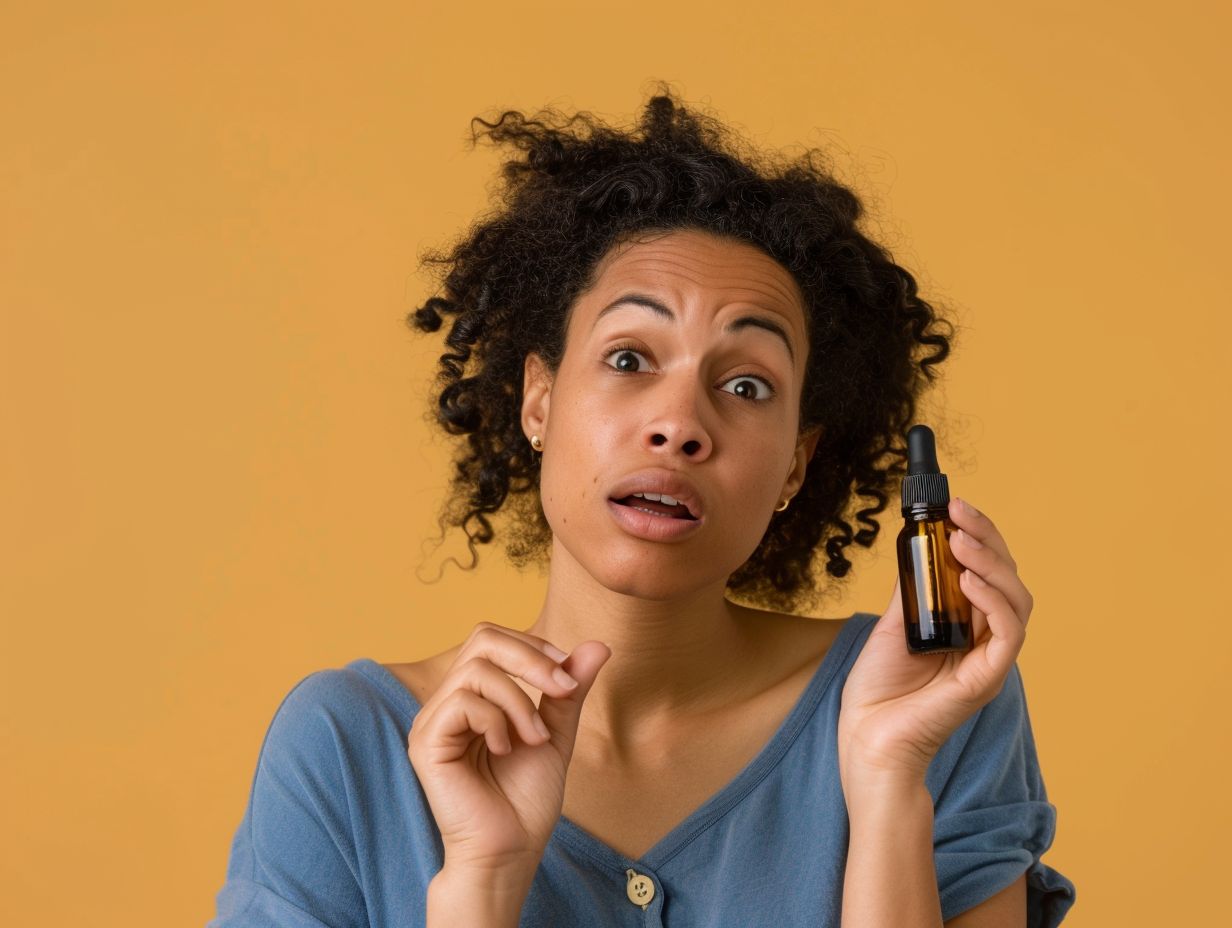

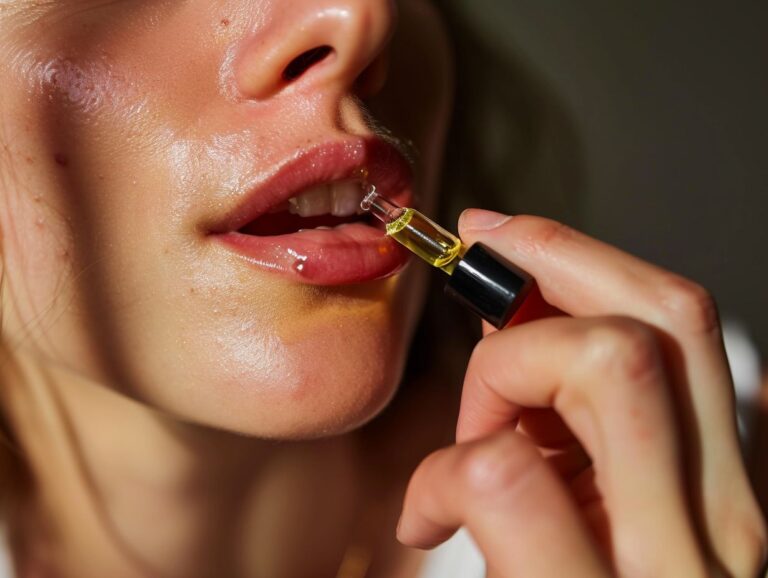

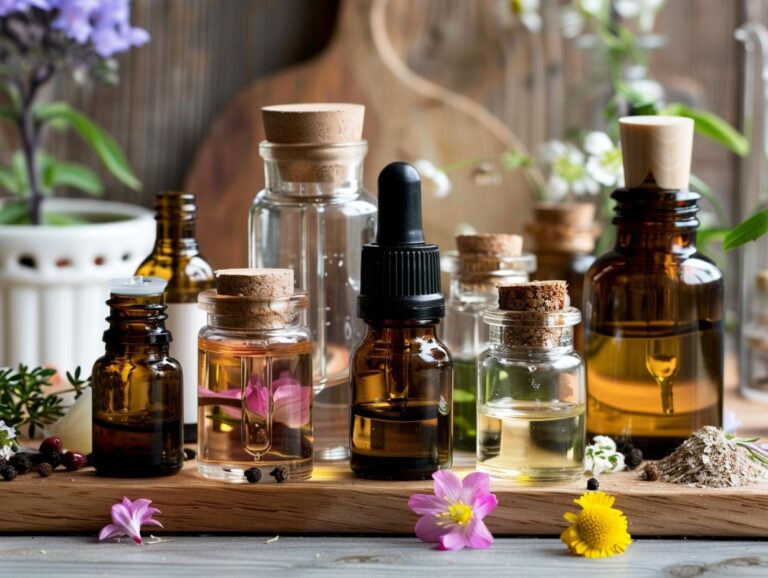
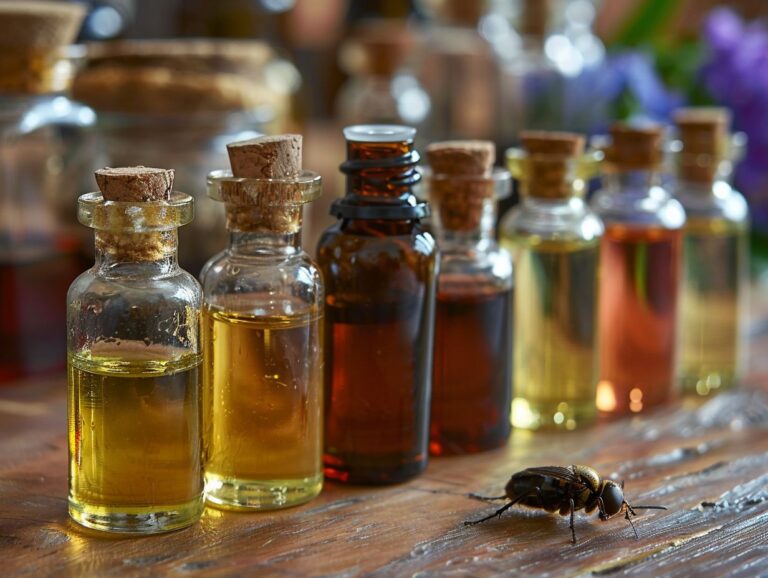

6 Comments